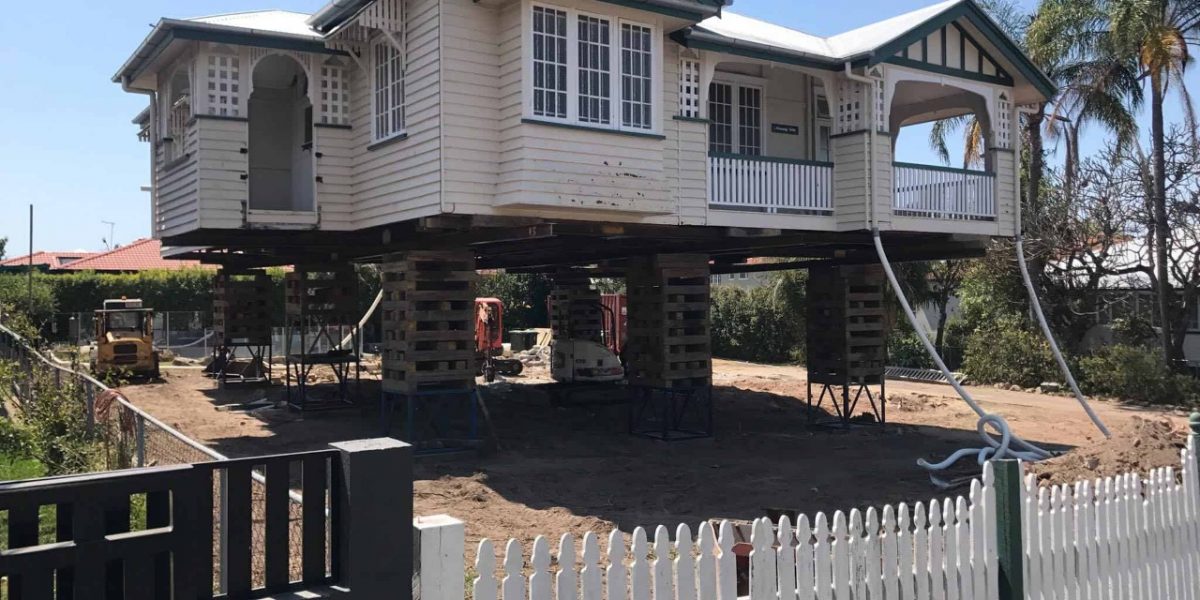One of the most familiar retrofitting methods is raising a house to a required or expected Flood Protection Elevation (FPE). When a house raising services is perfectly done, the living area will exceed all but the most severe floods (such as the 500-year flood). Several elevation methods are available. They involve (1) raising the house and building a new or expanding the existing foundation below it or (2) exiting the house in place and either installing an elevated floor within the house or counting a new upper story. Most frame, masonry veneer, and masonry homes are isolated from their foundations, raised on hydraulic jacks, and controlled by temporary supports during the elevation procedure.
In contrast, a new or extended foundation is created below. The living area is raised, and only the foundation stays uncovered to flooding. This method works well for houses originally built on a basement, crawlspace, and open foundations. When houses are raised when hired house raising services with this technique, the new or extended foundation can consist of either successive walls or separate piers, posts, columns, or pilings. Masonry homes are more challenging to lift, primarily because of their design, construction, and weight, but raising these homes is possible. Multiple contractors throughout the United States regularly accomplish this work.
Considerations- House Raising Services
Amount of Elevation
The amount of elevation needed is specified by the FPE you have chosen. For example, if your FPE is equivalent to the Base Flood Elevation (BFE), you will require to elevate your home so that the lowest floor is at or beyond that elevation. Suppose your home has been substantially harmed or is being substantially enhanced. In that case, your community’s floodplain management regulation or law will need that your lowest floor is promoted to or above the BFE.
Existing Foundation
The most thrifty approach to raising a house is to use as much of the current foundation as possible. Although some elevation procedures do not allow this practice, most do. If you select one of the latter, a design expert must evaluate the power of your existing foundation to sustain the loads that will be charged by the elevated house raising services and, as examined in the following section, the loads anticipated to result in flooding and other threats at the site.
If modifications must be made to the foundation to improve its strength and stability, they can be created as part of your retrofitting scheme, but they can improve both the cost of the task and the time needed to complete it. The type of foundation on which your home was originally built (cellar, crawlspace, slab-on-grade, docks, posts, pilings) also can influence the elevation process.
Hazards
Because multiple elevation plans are available, elevation is practical for nearly any flood situation. Still, the flooding situations and other hazards at the home site must be reviewed to determine the most suitable method. However, of the elevation technique used, the foundation of the raised house must be capable of withstanding, at a minimum, the standard loads from hydrostatic pressure, hydrodynamic pressure, and debris effect. It must also be capable of resisting undermining by any standard erosion and scour.
Access
raising a house usually needs that new standards of access to be delivered. For instance, if your entry doors were initially at ground level, new staircases, elevators, or ramps will be built. When an attached garage is raised, delivering vehicle access may need changes to parts of your lot, such as creating a new, elevated driveway on earth fill that links into high ground elsewhere. This answer can be practical when the part of the elevation demanded is no more than 2 or 3 feet. As noted before, when the piece of elevation reaches four or more feet, you should believe in elevating your house a full story to utilize the lower level for parking and avoid the demand for an elevated driveway.
House Size, Design, and Shape
The larger the home and the more complicated its design and shape, the more challenging it will be to lift on jacks. Multistory houses are more challenging to stabilize during the lifting operation. As the measurements and weight of a house expand, so do the required numerals of jacks and other parts of lifting equipment. Exterior wall surfaces such as stucco and brick veneer confuse the lifting process because they must either be released or braced to stay in place when the house is lifted. Houses with a simple square or rectangular shapes are more comfortable to lift than those with attached garages, porches, wings, or branches. They must usually be detached and lifted individually, especially if they are built on separate foundations.
To face all types of house raising Services challenges, No.1 House Lifting is here to provide you with the best house raising services and ready to face all the challenges and overcome them.


